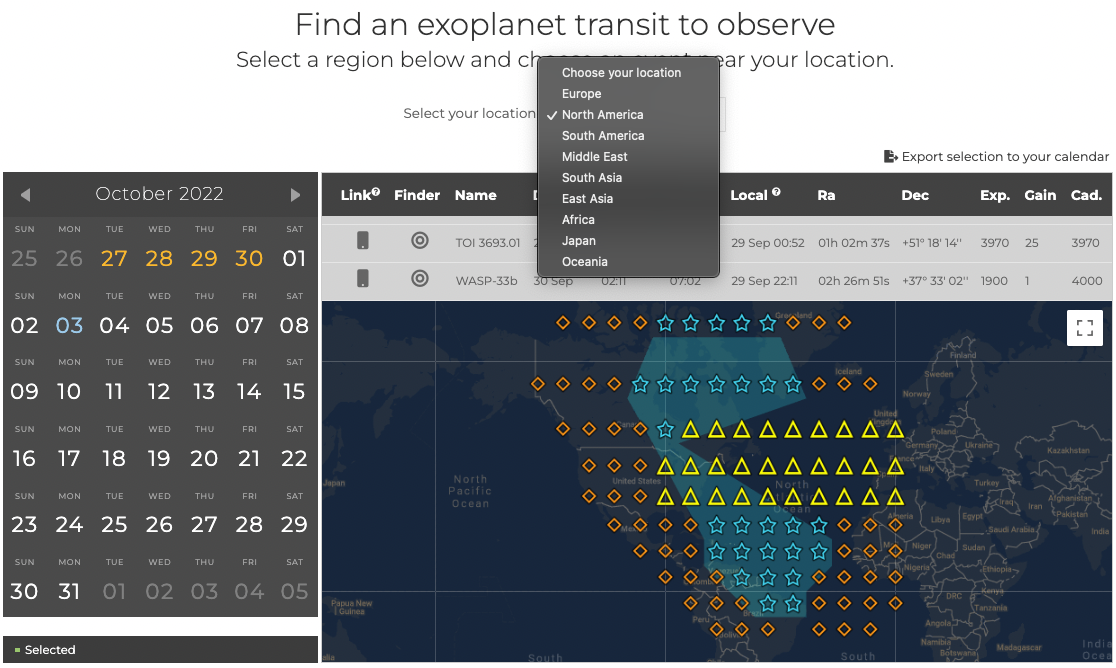UNITE: Unistellar Network Investigating TESS Exoplanets
NASA’s Transiting Exoplanet Sky Survey mission has identified many new exoplanets! Astronomers now need your help to characterize the orbits of these exoplanets as a first step in learning about them. Join the worldwide Unistellar global network of amateur and professional astronomers working to document the timing of exoplanets' transits (a “transit” happens when a planet passes in front of its star, briefly blocking the starlight). We are tracking both the frequency and length of transit periods to better describe the orbits.
project task
Collecting data with telescope
division
Astrophysics
where
Outdoors under the night sky – in dark countryside and also in bright cities.
launched
2022
What you'll do
- Use your own telescope to observe newly discovered exoplanets and collect information about its transits to help characterize its orbit.
- Coordinate with other citizen scientists and researchers around the globe to track and learn about these new worlds.
Requirements
- Time to get started: 5-15 minutes to complete the tutorial; observations take 1+ hours
- Equipment: Unistellar or similar telescope
- Knowledge: None. An in-project tutorial provides all instruction needed.
Get started!
- Visit our project get started page.
- Pick your target based on your location and note the observation details.
- 10 minutes before the predicted transit, point your telescope at the target (detailed instructions provided).
- Observe the system and fill out an online observation report.
Learn More
Questions about exoplanets? Check out the Learn About Exoplanets section of our website. You can also read about what our global collaboration has accomplished to date in our Results section.
If you don’t have a Unistellar telescope, you can still participate! Visit our website to learn how.
Follow UNITE’s parent organizations Unistellar and The SETI Institute on X!

Blue stars & shading = you can observe the entire event.
Yellow triangles = you can observe the entire event but you may have brief tracking difficulty due to the high altitude of the target star.
Orange diamonds = you may miss the start or end of the event but your data will still be useful.
Get to know the people of UNITE!

Tom Esposito
UNITE Principal Investigator, Exoplanets Co-Lead, Pipeline Development/ Exoplanet Detection Scientist

































